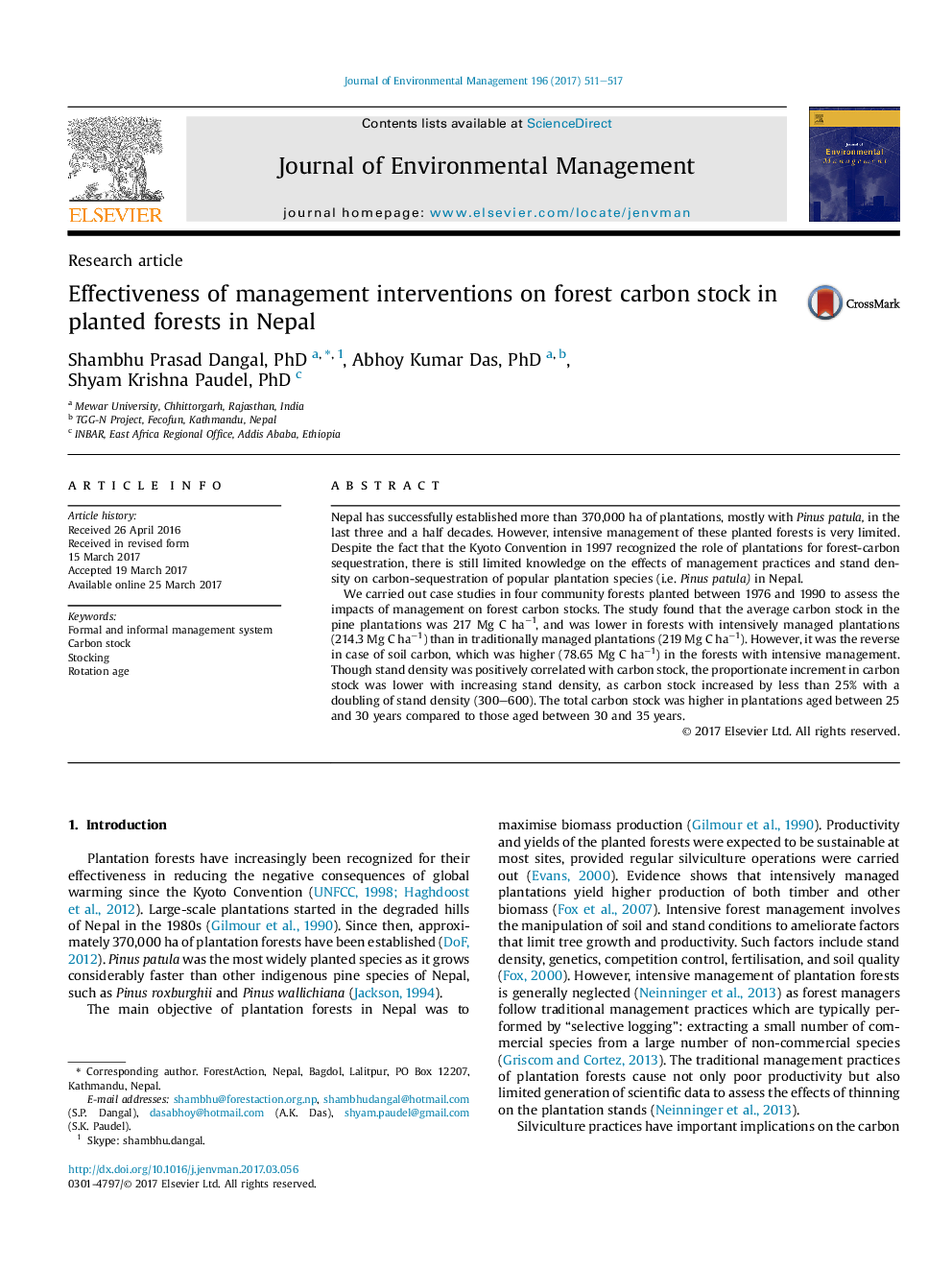| Article ID | Journal | Published Year | Pages | File Type |
|---|---|---|---|---|
| 5116690 | Journal of Environmental Management | 2017 | 7 Pages |
â¢The average carbon stock of pine plantations in Nepal is 217 t C/ha.â¢The stand density between 600 and 900 trees/ha stores highest carbon than other densities.â¢The C content of tree biomass of age class 25-30 was about 30% higher than later.â¢The rotation age of pine should be between 25 and 30 years for maximum carbon benefits.
Nepal has successfully established more than 370,000 ha of plantations, mostly with Pinus patula, in the last three and a half decades. However, intensive management of these planted forests is very limited. Despite the fact that the Kyoto Convention in 1997 recognized the role of plantations for forest-carbon sequestration, there is still limited knowledge on the effects of management practices and stand density on carbon-sequestration of popular plantation species (i.e. Pinus patula) in Nepal.We carried out case studies in four community forests planted between 1976 and 1990 to assess the impacts of management on forest carbon stocks. The study found that the average carbon stock in the pine plantations was 217 Mg C haâ1, and was lower in forests with intensively managed plantations (214.3 Mg C haâ1) than in traditionally managed plantations (219 Mg C haâ1). However, it was the reverse in case of soil carbon, which was higher (78.65 Mg C haâ1) in the forests with intensive management. Though stand density was positively correlated with carbon stock, the proportionate increment in carbon stock was lower with increasing stand density, as carbon stock increased by less than 25% with a doubling of stand density (300-600). The total carbon stock was higher in plantations aged between 25 and 30 years compared to those aged between 30 and 35 years.
